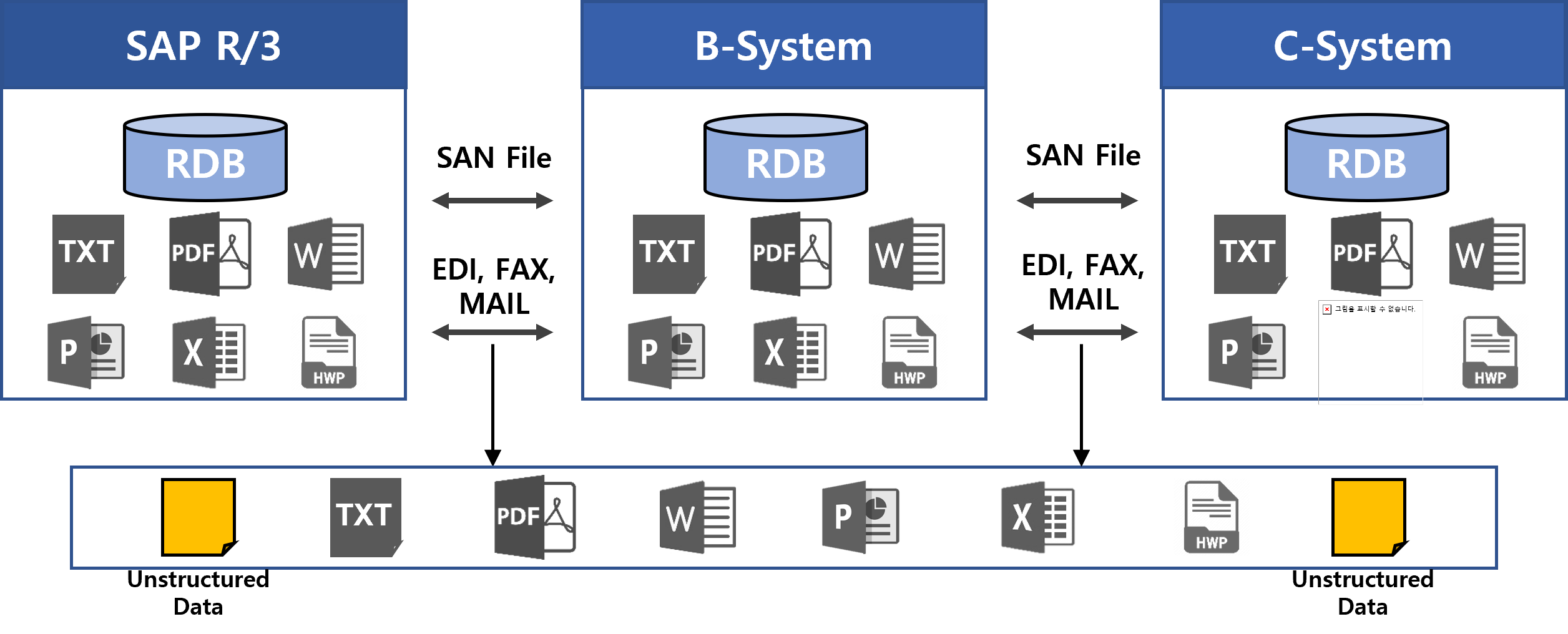AutoXML Integration
The existing EAI integration method uses an adapter that converts data in the database and transfers
it to the database of the system to be integrated and integrates it.
However, since there is no standardization between systems, it requires a lot of money, time, and development staff to convert each wrong data.
In addition, it is emerging as a very important issue to remove data duplication and develop data accuracy when integrating data.
The most important technology to solve this is XML.
In the past, such integration was difficult to imagine, but since the advent of XML, integration has become easier and simpler.
However, in order to implement XML-style integration, it is necessary to start with the creation of XML documents, and there are still many issues to be solved in generating XML documents.
For example, the development environment platform or XML tool and engine have not been sufficiently developed and used yet.
And to implement integration, many parts (Registry, Repository, conversion tool, engine, security) must be developed.
The integration method in AutoXML utilizes the advantages of XML to the maximum to avoid data duplication and enables integration through simple development and deployment.
However, since there is no standardization between systems, it requires a lot of money, time, and development staff to convert each wrong data.
In addition, it is emerging as a very important issue to remove data duplication and develop data accuracy when integrating data.
The most important technology to solve this is XML.
In the past, such integration was difficult to imagine, but since the advent of XML, integration has become easier and simpler.
However, in order to implement XML-style integration, it is necessary to start with the creation of XML documents, and there are still many issues to be solved in generating XML documents.
For example, the development environment platform or XML tool and engine have not been sufficiently developed and used yet.
And to implement integration, many parts (Registry, Repository, conversion tool, engine, security) must be developed.
The integration method in AutoXML utilizes the advantages of XML to the maximum to avoid data duplication and enables integration through simple development and deployment.

Difference between AutoXML and other integrated systems



